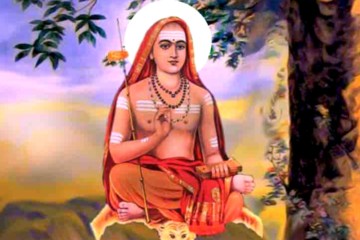|
Advaita of Adi Shankaracharya
Adi Shankaracharya was an exponent of Advaita Vedanta philosophy which is expounded in the following shloka: ब्रह्म सत्यं जगत् मिथ्या जीवो ब्रह्मैव नापरः (Brahman is the only truth, the world is illusory, and there is ultimately no difference between Brahman and individual self) Adi Shankaracharya was born in 8th century in Kaladi village of Kerala and lived for 32 years. He composed commentaries on the more than 250 Vedic texts (Brahma Sutras, Geeta, Principal Upanishads, Bhagavad Gita, Vishnushstrnam, Lalitatristi, Vivikcudamani etc.). Vivekcudamani expounds the Advaita Vedanta philosophy. As per Advaita Vedanta philosophy, there are two realities: Vyavaharika (empirical reality, Maya) and Paramarthika (absolute, spiritual Reality, Brahman). Maya create a bondage to the empirical world, preventing the unveiling of the true Self (Real, Atman, Brahman). The major highlights of the Advaita Vedanta philosophy are mentioned as under:
Reference: Sri Sankaracarya’s Vivekacudamani by Svami Madhavananda
0 Comments
Leave a Reply. |
Archives
April 2024
Categories |

 RSS Feed
RSS Feed